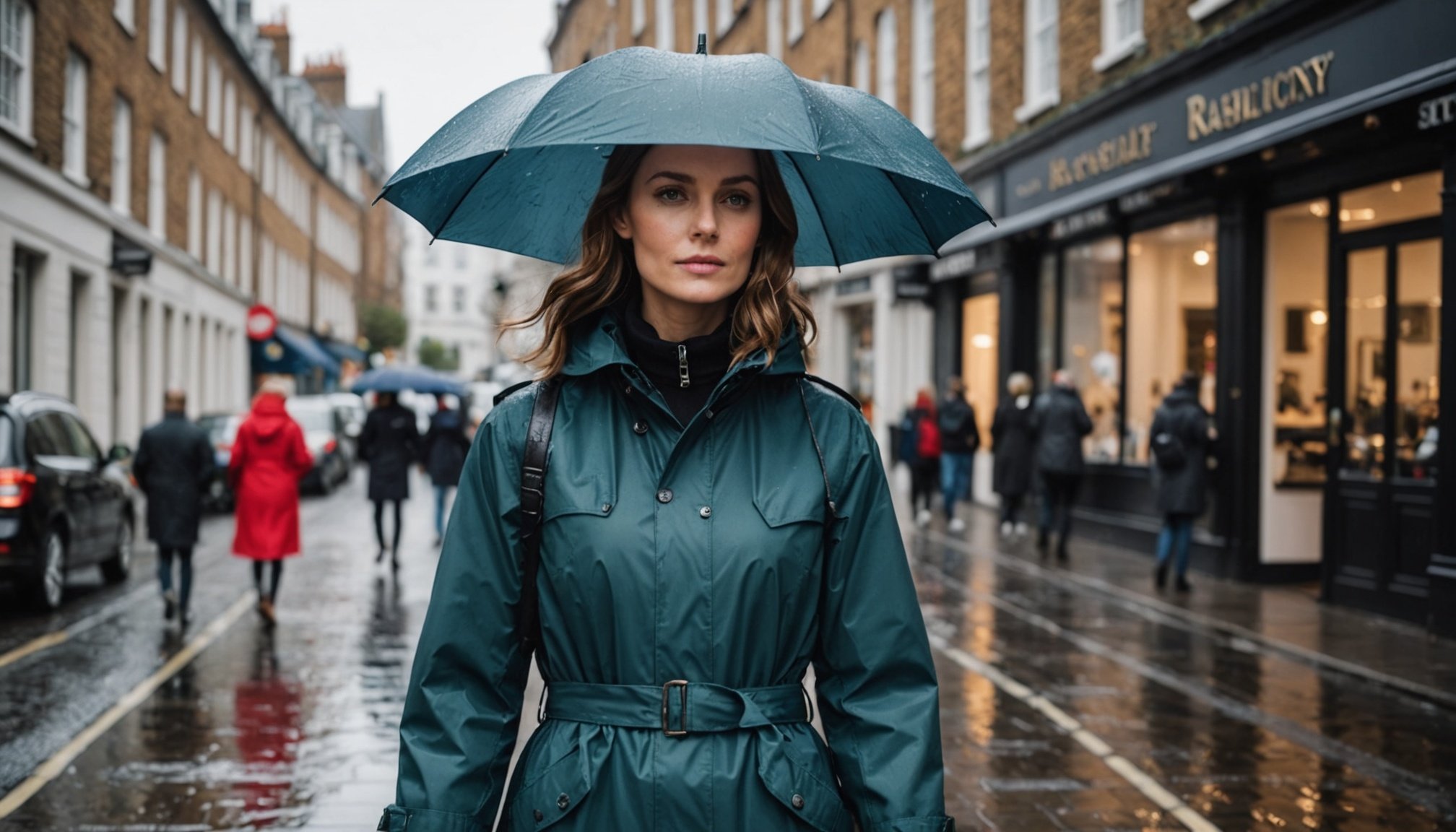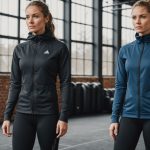Unpredictable UK weather can turn a sunny day into a downpour in minutes. The right raincoat can make all the difference, providing comfort and style. With numerous options available, choosing the ideal raincoat becomes an adventure in itself. From breathable fabrics to stylish designs, understanding your needs is essential. This guide will help you navigate the choices, ensuring you find a raincoat that withstands the elements while reflecting your personal style. Get ready to embrace the rain with confidence!
Understanding the UK's Weather and Its Impact on Raincoat Selection
The UK weather is famously unpredictable, which makes raincoat selection a bit of a challenge. With its climate variability, the UK experiences both mild and extreme weather conditions, often within the same day. This unpredictability is primarily due to its maritime climate, influenced by the Atlantic Ocean and prevailing westerly winds.
Also read : Mastering the Etiquette: Can You Wear White to a Wedding in the UK?
Seasonal changes significantly affect raincoat needs. During autumn and winter, the UK tends to experience increased rainfall and cooler temperatures. Therefore, raincoats with waterproof and insulated features become essential. In contrast, spring and summer can bring lighter showers and warmer temperatures, necessitating breathable and lightweight raincoats.
When selecting a raincoat, it's crucial to consider the specific weather conditions you are likely to encounter. For instance, a raincoat suited for a mild drizzle might not offer adequate protection during a heavy downpour. Features such as waterproof materials, breathability, and insulation should be tailored to the climate conditions. Ultimately, understanding the UK's climate variability and seasonal changes ensures that you choose a raincoat that provides both comfort and protection throughout the year.
In parallel : Essential Components of a Eco-Friendly Capsule Wardrobe for UK Women: A Complete Guide
Types of Raincoats Available
When it comes to choosing the right raincoat, understanding the different raincoat types is essential. The variety available caters to various needs, from waterproof jackets to breathable raincoats, each serving a specific purpose.
Lightweight Raincoats
Lightweight raincoats are perfect for mild weather conditions, offering protection without the bulk. These breathable raincoats are ideal for spring and summer, allowing for comfort during light showers. They are typically made from materials that repel water while ensuring adequate airflow, preventing overheating.
Insulated Raincoats
For colder months, insulated raincoats provide warmth and protection against harsh weather. These raincoats often feature a combination of waterproof materials and thermal linings, ensuring you stay dry and warm. They are particularly useful during autumn and winter when temperatures drop, and rainfall increases.
Long vs. Short Raincoats
Choosing between long and short raincoats depends on personal preference and specific needs. Long raincoats offer more coverage, ideal for heavy rain and windy conditions. However, they can be less practical for activities requiring more movement. Short raincoats, on the other hand, provide ease of movement and are suitable for casual outings. Both types are available in various waterproof jackets, ensuring you find the perfect fit for your lifestyle.
Materials and Their Functionality
When choosing a raincoat, understanding the raincoat materials is crucial to ensure both comfort and protection. Common materials like Gore-Tex, nylon, and polyester each offer unique benefits.
Gore-Tex is renowned for its exceptional waterproof fabric and breathability. It uses a membrane that allows moisture to escape while preventing water from entering, making it ideal for active wearers. Nylon, on the other hand, is lightweight and durable, often coated with a waterproof layer to enhance its water resistance. However, it may not be as breathable as Gore-Tex. Polyester is another popular choice, known for its affordability and quick-drying properties, but it can sometimes lack the breathability needed for prolonged wear.
Balancing breathability vs. waterproof ratings is essential. Higher waterproof ratings offer better protection against heavy rain, but may compromise breathability, leading to discomfort. Conversely, highly breathable materials may not withstand torrential downpours.
Sustainability in raincoat materials is gaining importance. Many manufacturers now offer eco-friendly options, using recycled materials or sustainable production methods. This shift not only reduces environmental impact but also provides consumers with guilt-free choices, aligning with growing environmental consciousness.
Assessing Quality and Fit
When selecting a raincoat, understanding raincoat quality is essential to ensure durability and effectiveness. High-quality raincoats often feature reinforced seams, durable zippers, and robust waterproof coatings. These elements contribute to a raincoat's longevity and ability to withstand harsh weather conditions.
The fit guide is crucial in choosing a raincoat that offers both comfort and mobility. A well-fitted raincoat should allow for layering, especially in colder months, without restricting movement. It should also provide adequate coverage to prevent water from seeping in, particularly around the neck and wrists.
Sizing tips are helpful when trying on raincoats. It's advisable to wear the type of clothing you plan to use underneath the raincoat during the fitting process. Ensure there's enough room for movement without excess material that could catch the wind. Consider adjustable features, such as drawstrings or Velcro cuffs, which enhance the fit and keep you dry.
In summary, prioritising quality and fit in a raincoat ensures you remain comfortable and protected, regardless of the weather. By focusing on these aspects, you can make an informed decision and find a raincoat that meets your specific needs.
Additional Features to Consider
When selecting a raincoat, it's essential to evaluate various raincoat features that enhance functionality and comfort. An adjustable hood is a valuable feature, offering protection from rain while allowing for a customised fit. This adaptability ensures the hood stays secure in windy conditions, preventing water from dripping down your neck.
Pockets play a crucial role in a raincoat's practicality. They provide convenient storage for personal items, keeping them dry and accessible. Consider raincoats with zippered or flap-covered pockets to ensure maximum water resistance. Ventilation systems, such as underarm zippers or mesh linings, are also beneficial. They promote airflow, reducing moisture build-up and enhancing comfort, especially during active pursuits.
Adjustable cuffs are another important feature. They allow you to tighten or loosen the sleeves, preventing water from seeping in and ensuring a snug fit. This is particularly useful in heavy rain or when wearing gloves.
When assessing these additional features, consider your lifestyle and typical weather conditions. A raincoat with well-thought-out features can significantly improve your experience, offering both protection and convenience tailored to your needs.
Maintenance and Care for Longevity
Proper raincoat maintenance is crucial to ensure its durability and effectiveness over time. Regular cleaning and care can significantly extend the lifespan of your raincoat.
Best Practices for Washing
When washing your raincoat, always follow the manufacturer's instructions. Generally, it's advisable to use a gentle cycle with cold water and a mild detergent. Avoid fabric softeners, as they can damage waterproof coatings. After washing, rinse thoroughly to remove any detergent residue.
Reapplying Waterproof Coatings
Over time, the waterproof coating on your raincoat may wear off. To restore its effectiveness, consider using a specialised waterproofing spray. Apply the spray evenly on a clean, dry raincoat, focusing on areas that are more prone to wear, such as shoulders and seams. Allow it to dry completely before use.
Storage Tips
Proper storage is essential for maintaining your raincoat's condition. Store it in a cool, dry place away from direct sunlight. Avoid folding it tightly, as this can cause creases and damage the fabric. Instead, hang it on a padded hanger to maintain its shape. Regularly check for any signs of wear or damage and address them promptly.











